VERY RARE! Original 1903 New York City Woodside Queens Early 1900's NYC Blueprint Map (PLATE 10)

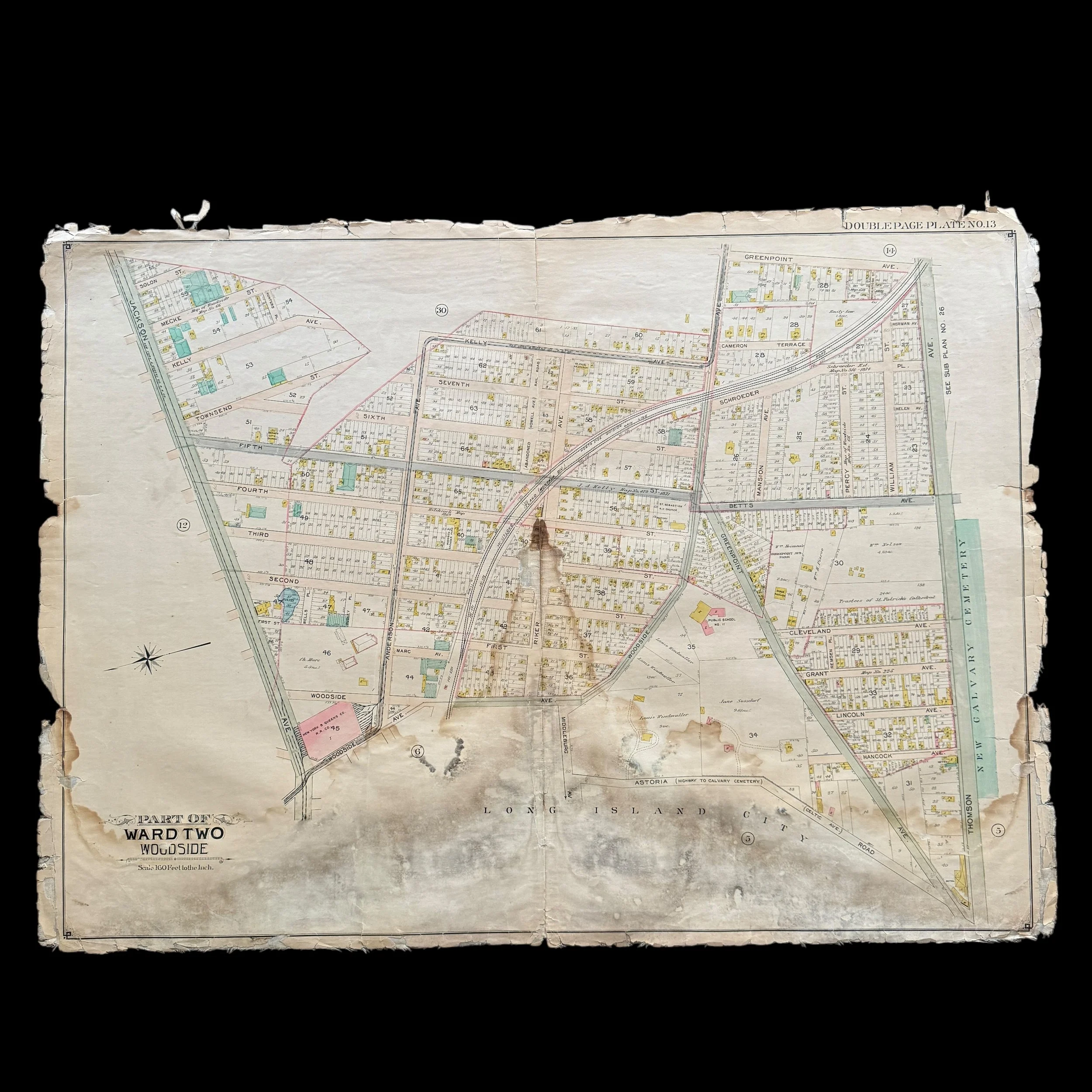
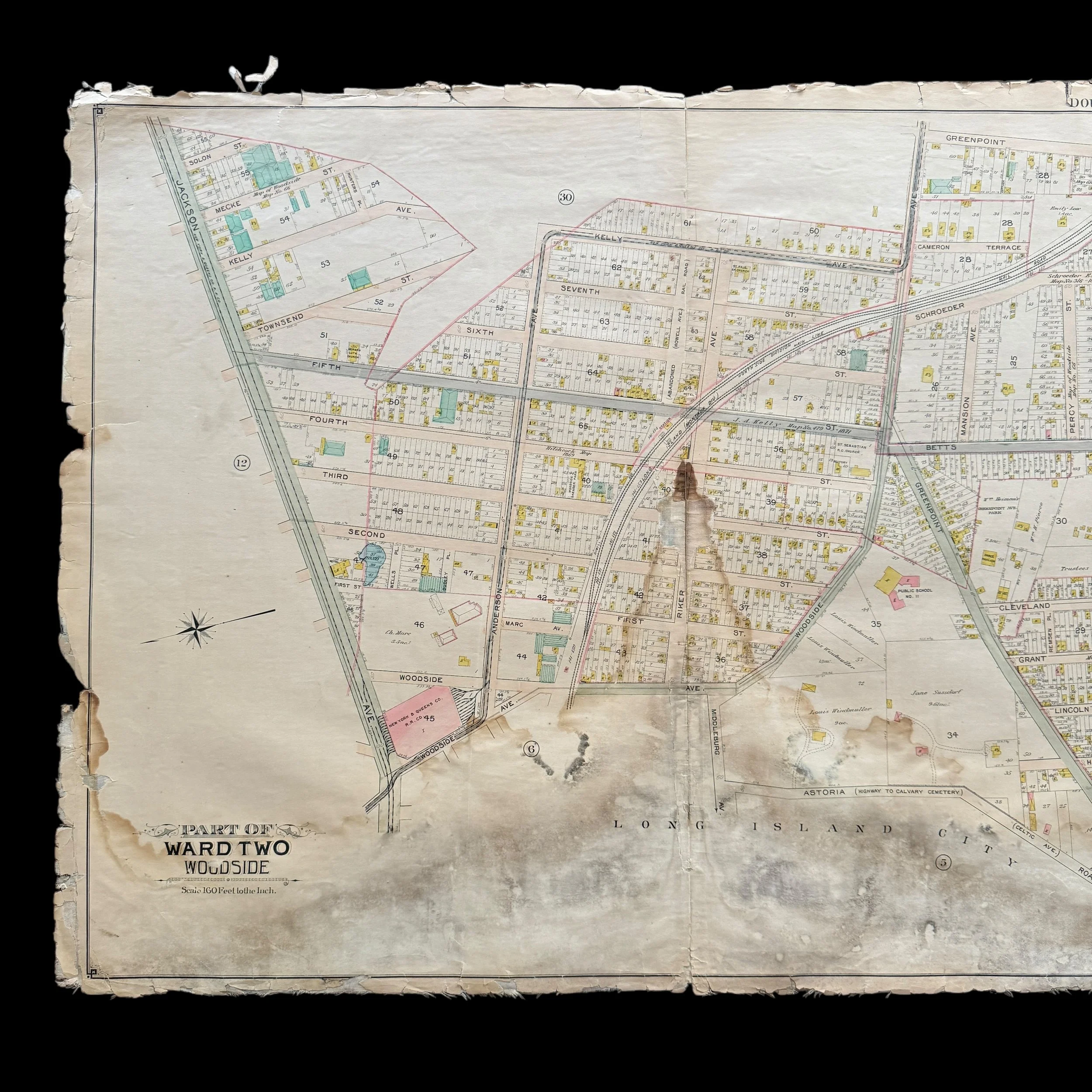

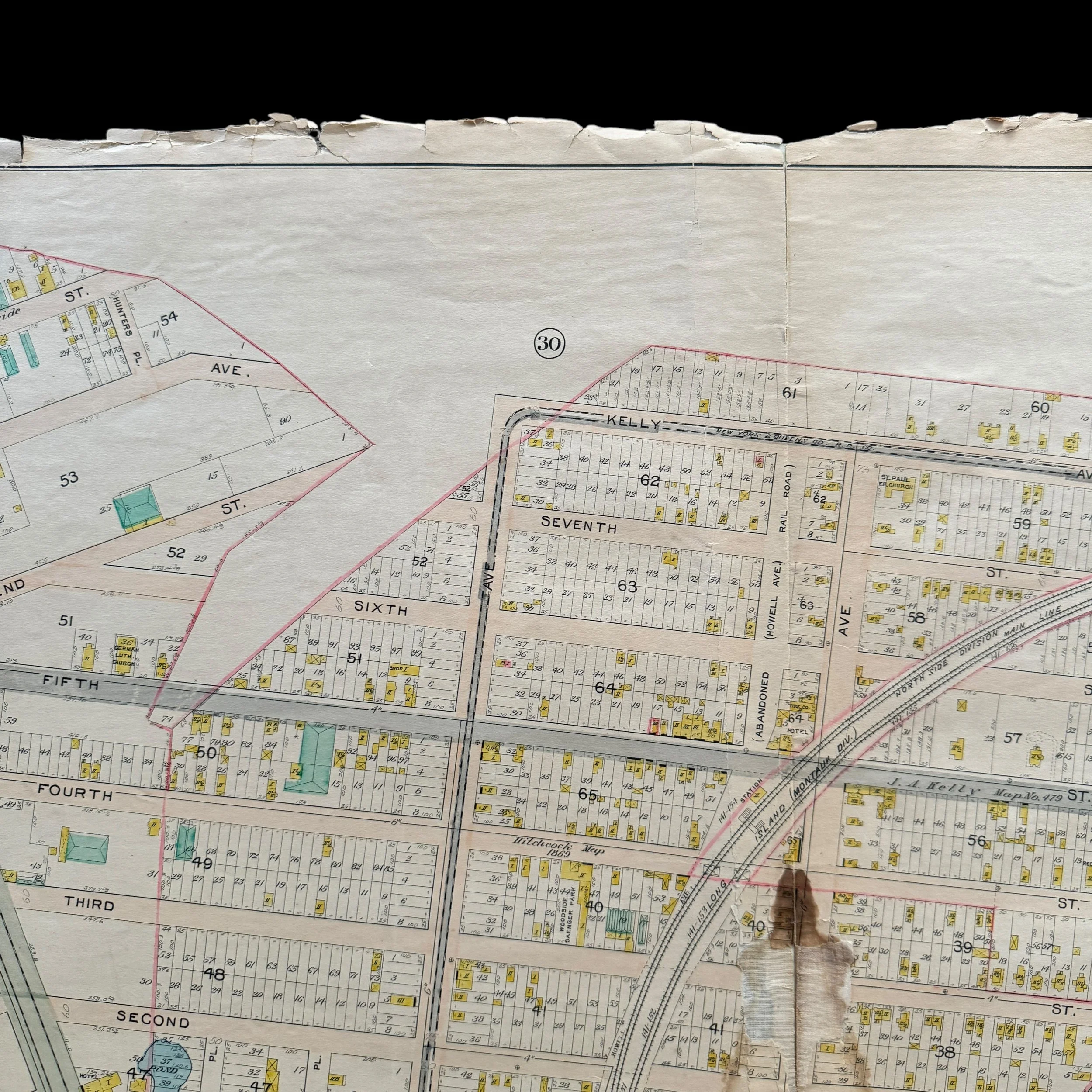
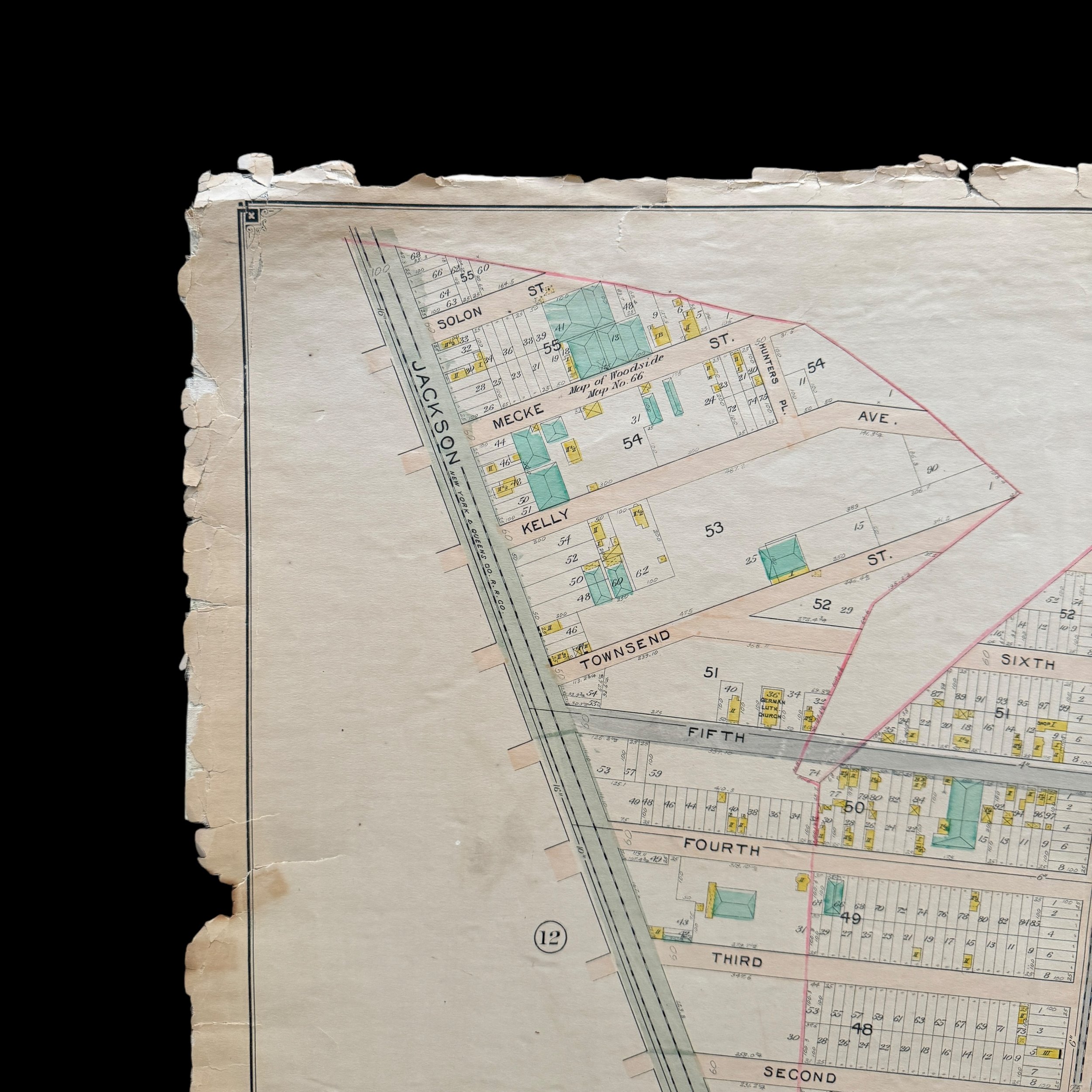
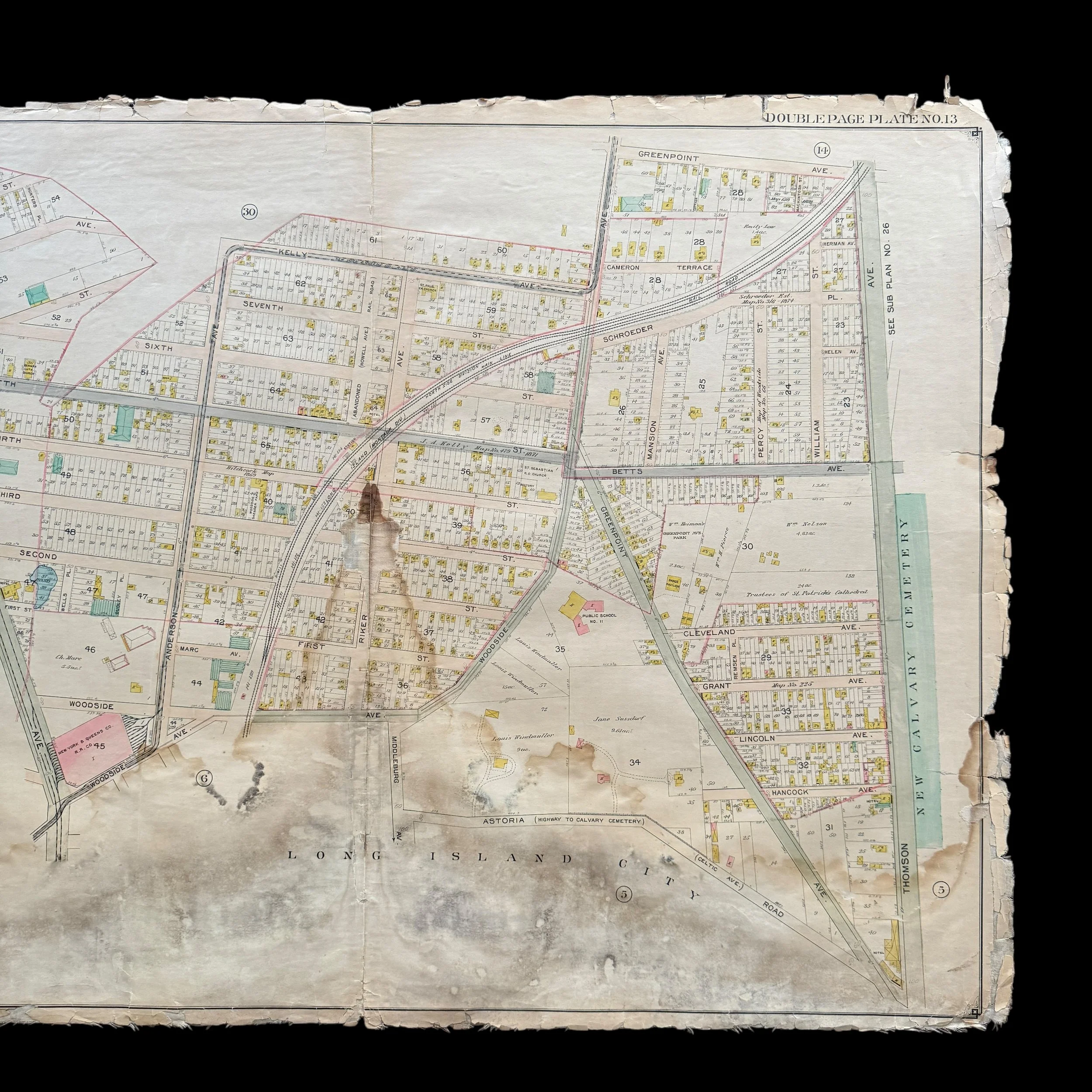
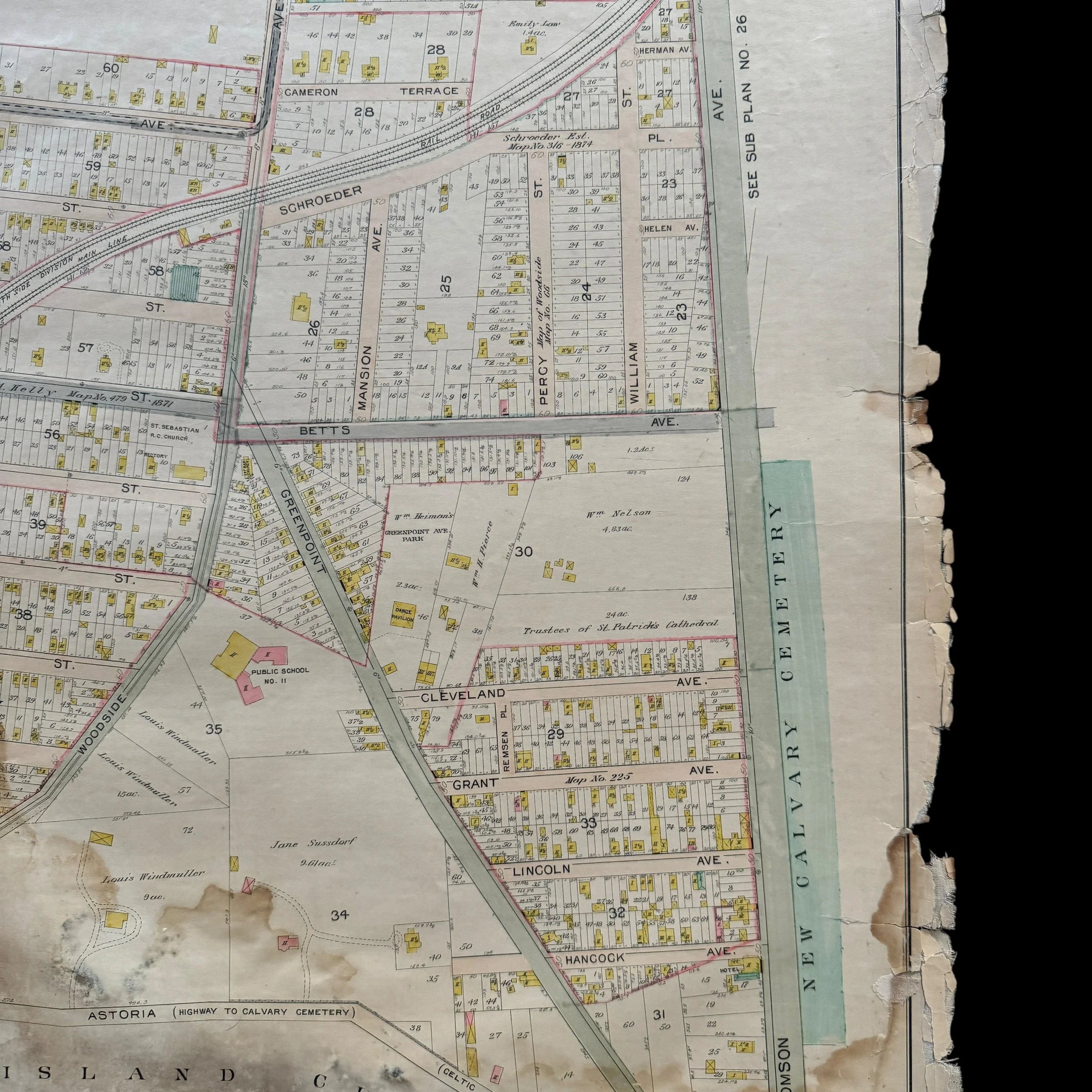
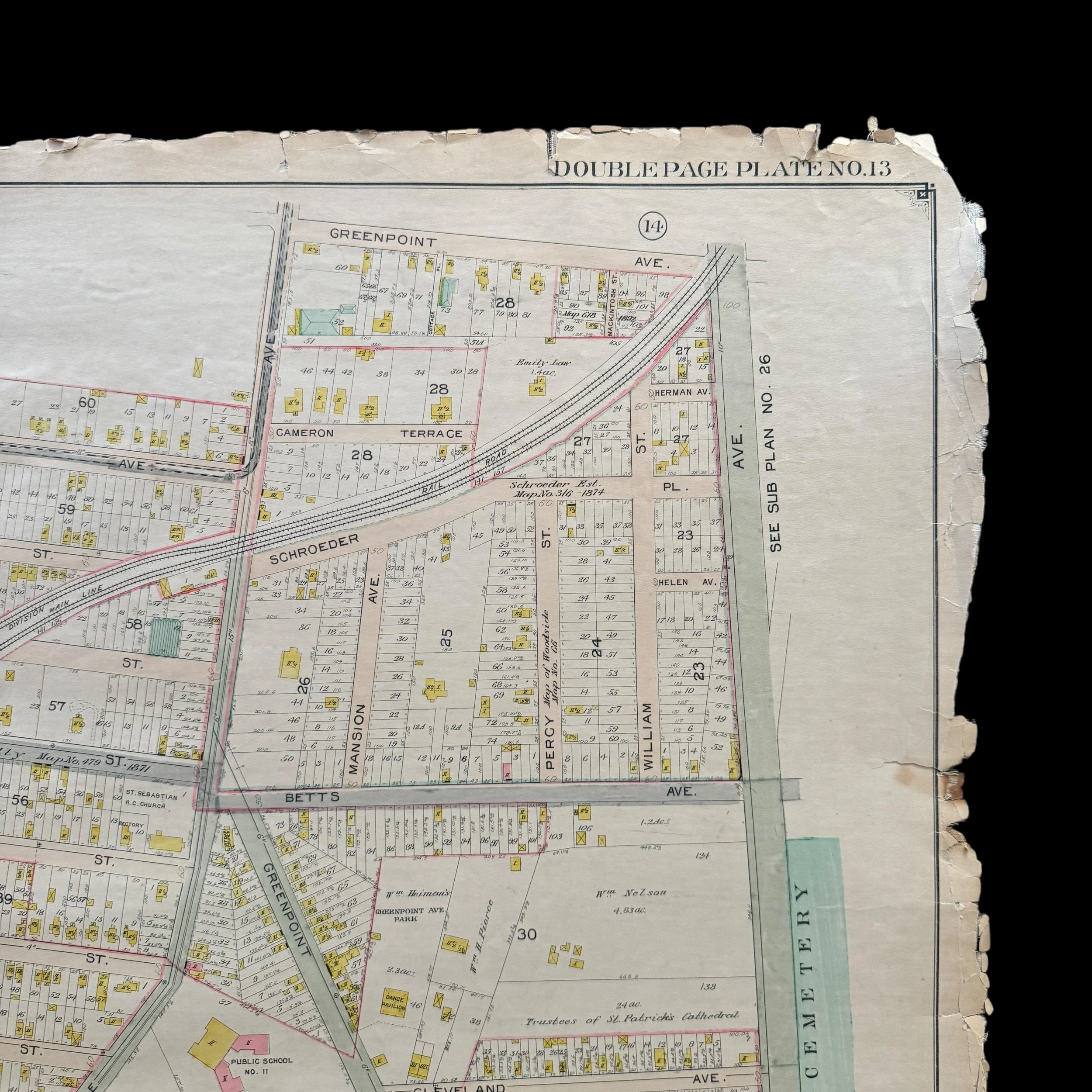
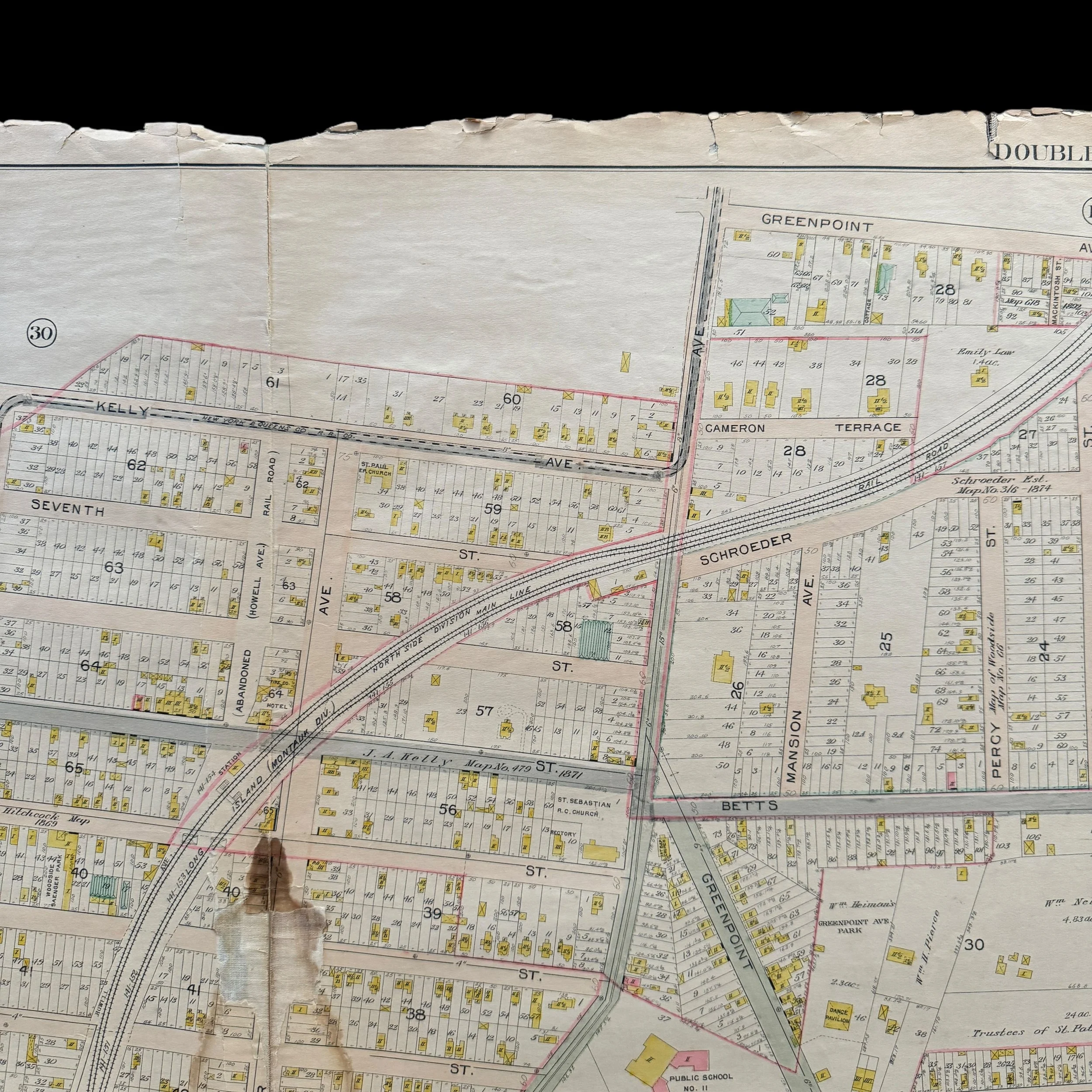
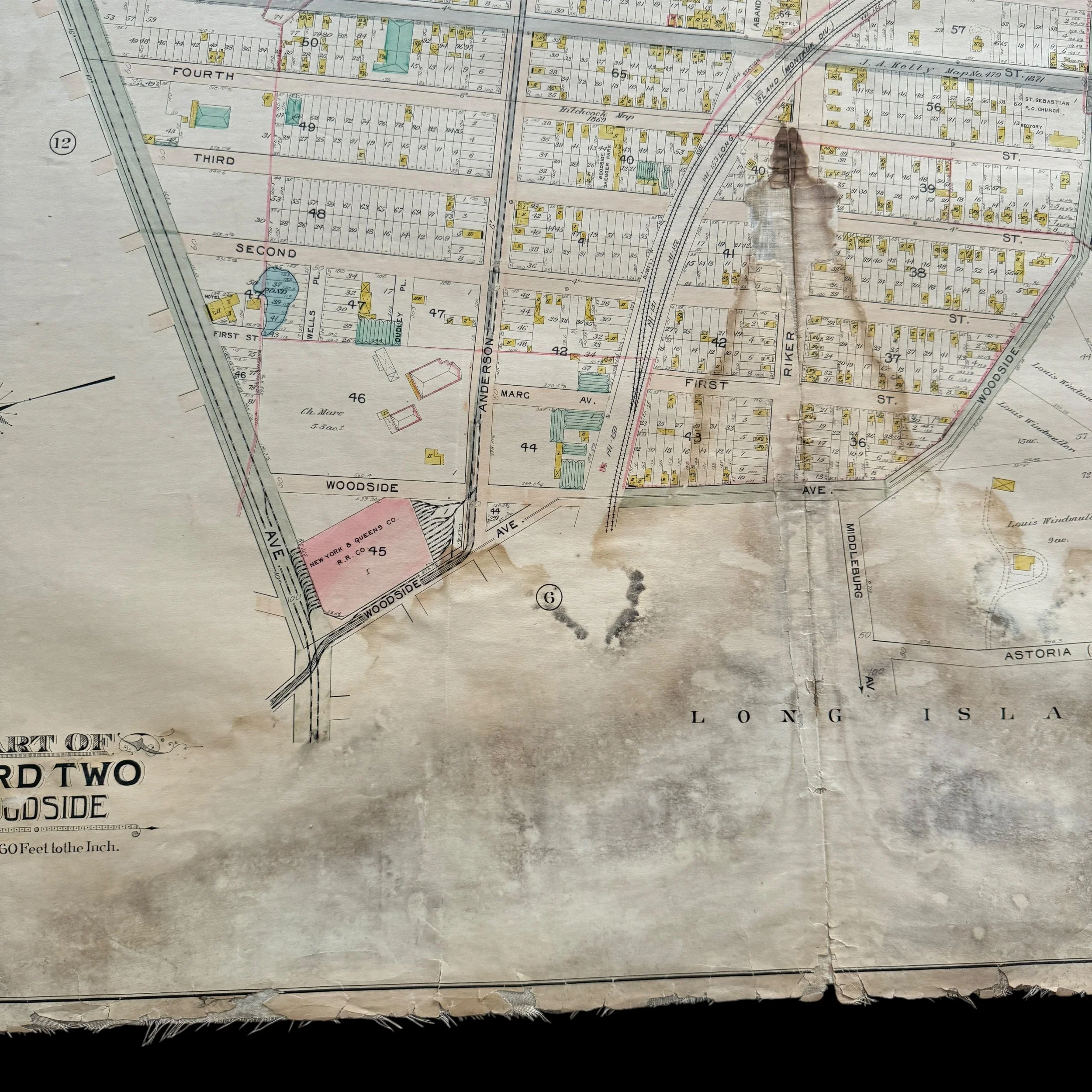
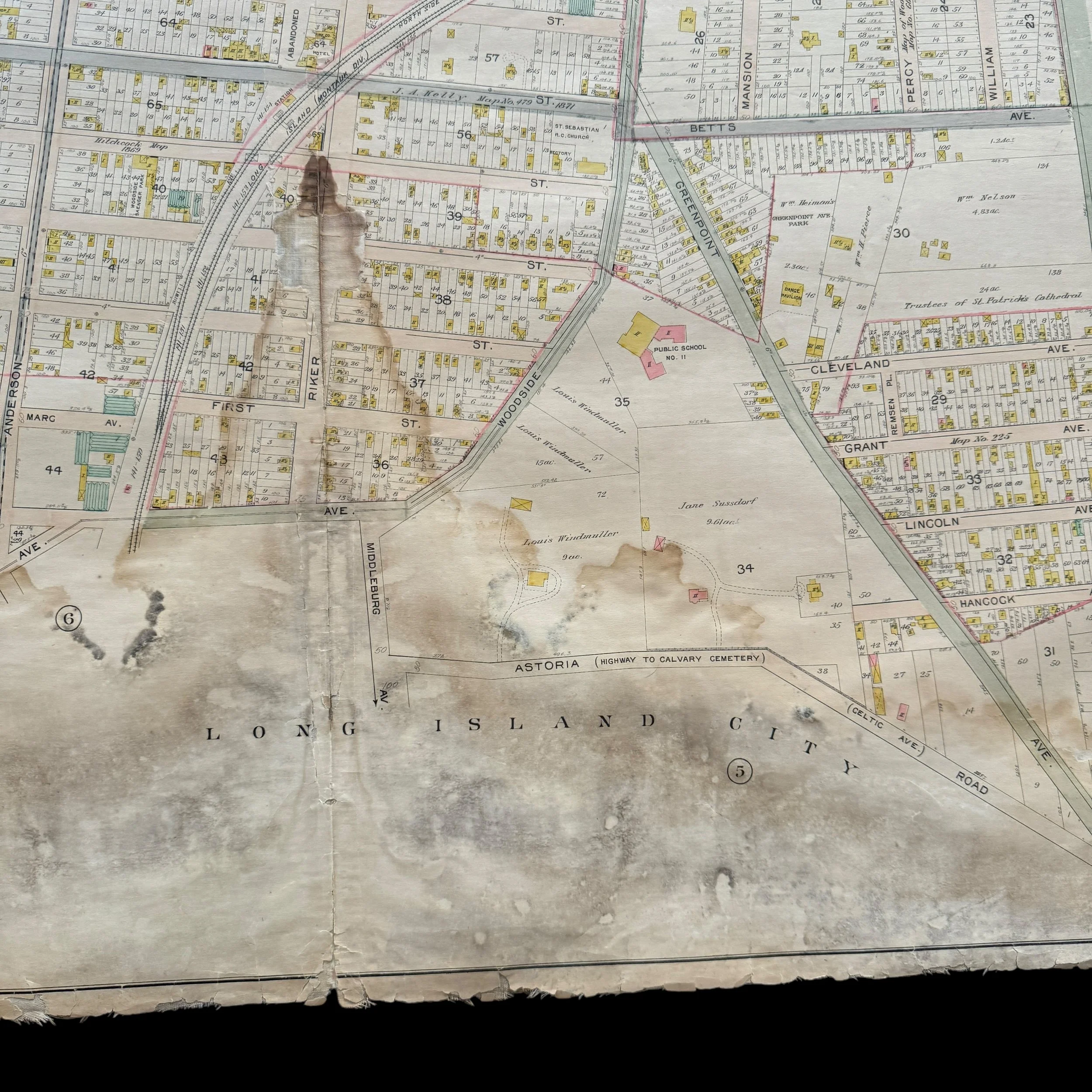
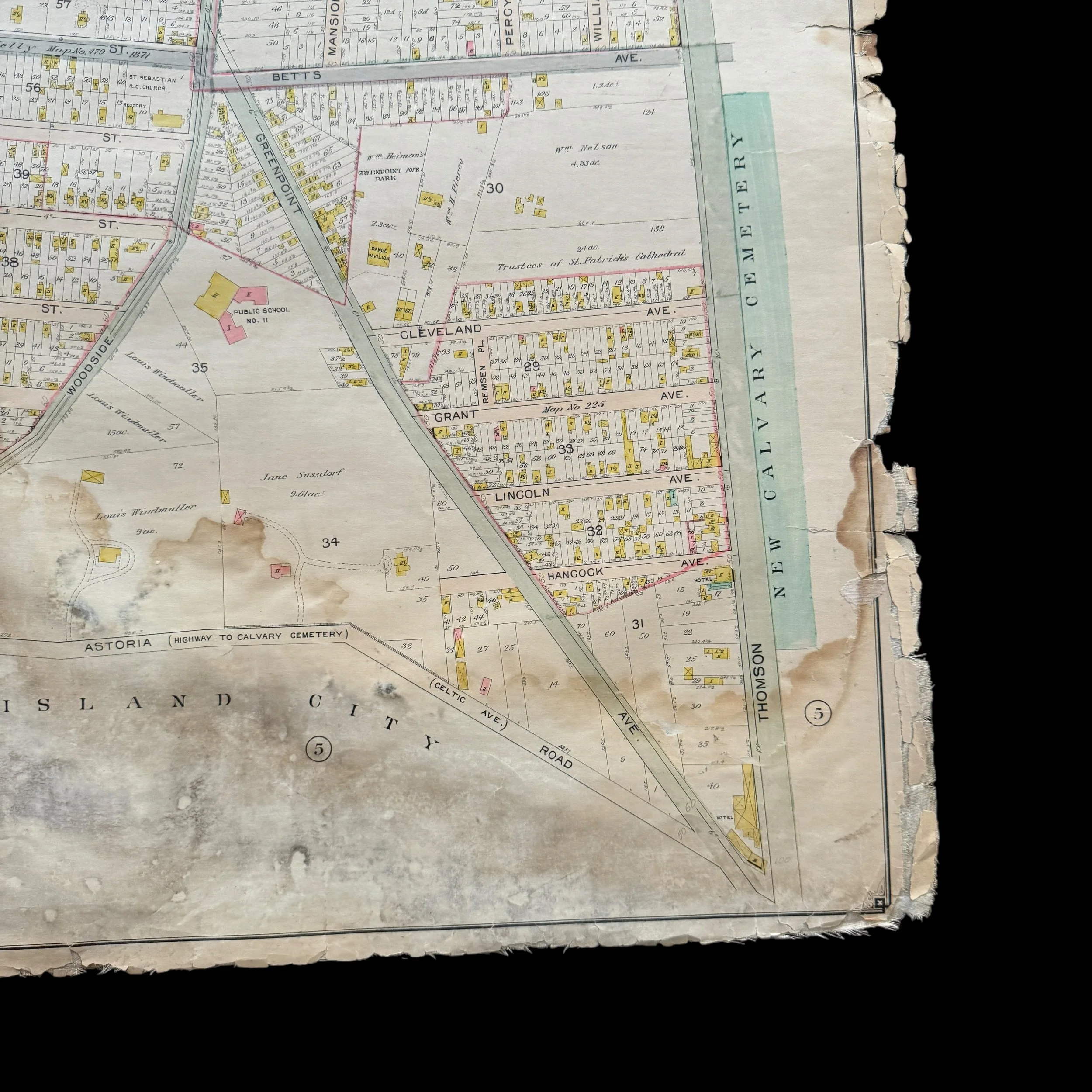
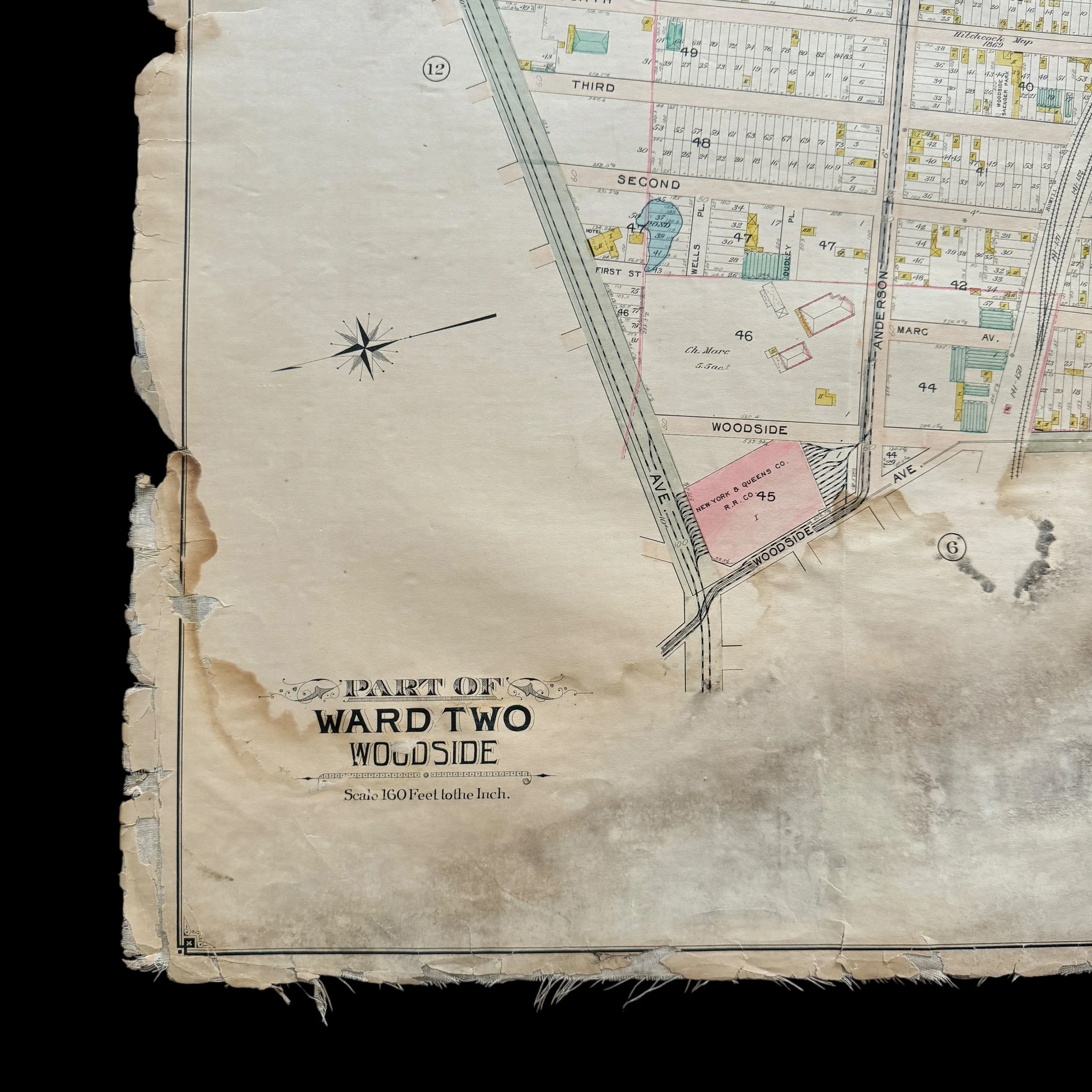


















VERY RARE! Original 1903 New York City Woodside Queens Early 1900's NYC Blueprint Map (PLATE 10)
Comes with a hand-signed C.O.A.
*This is an extremely rare piece of original early 1900s New York City history that would make a stunning centerpiece in any collection. Framed and displayed, this original 1903 NYC blueprint would not only serve as a captivating conversation piece but also as a tangible link to the city’s past. Its detailed craftsmanship and historical significance make it perfect for anyone passionate about New York City's rich architectural and urban development history. Whether featured in a private collection, office, or historical space, this rare blueprint is sure to become a treasured heirloom that celebrates the evolution of one of the world's greatest cities.
Size: 27 × 37 inches
Dated: 1903
Place: New York - Brooklyn - Queens
Publisher: E. Belcher Hyde
Features: Kelly Ave., Woodside Ave., Greepoint Ave., Thomson Ave.; Including Astoria Road (Highway to Calvary Cemetery) (Celtic Ave.), Middleburg Ave., Jackson Ave., Solon St., Mecke St.
This extraordinary, museum-grade artifact from early 1900s New York City is an original 1903 blueprint titled “Part of Ward Two - Woodside.” Created by the distinguished cartographer and publisher E. Belcher Hyde, this historically rich document captures the intricate details of Woodside, Queens, at a time when New York was undergoing remarkable transformation. Known for his exceptional real estate and property maps, Hyde’s work in the late 19th and early 20th centuries is celebrated for its precision and historical depth, making this blueprint a remarkable piece of the city's history.
At over a century old, this blueprint is part of a broader series that mapped out sections of New York City, including Queens, Brooklyn, and other boroughs. As NYC expanded rapidly, these maps played a vital role in documenting the city’s growth. In 1903, just five years after the city’s consolidation into Greater New York in 1898, neighborhoods like Woodside were evolving from semi-rural areas into integral parts of a burgeoning metropolis. Detailed blueprints like this one were essential in guiding the city’s urban development, serving as critical resources for real estate professionals, city planners, and developers.
The information captured by Hyde in this blueprint goes far beyond basic mapping. It includes property boundaries, building footprints, street layouts, lot numbers, and even ownership information. Also visible are railways, waterways, and industrial zones, which were essential to the infrastructure and commerce of the area. These maps were not only practical tools but legal documents, frequently consulted in disputes over property lines and land use. Hyde’s meticulous attention to detail ensured that these blueprints reflected the swift changes shaping New York City at the dawn of the 20th century.
Hyde’s blueprints are now revered as invaluable historical records of New York’s urban landscape. They offer a rare and detailed glimpse into the planning and development of the city during one of its most transformative periods, preserving a snapshot of how New York City and Long Island evolved from scattered neighborhoods into the global metropolis we know today.
Owning this original 1903 E. Belcher Hyde blueprint is a once-in-a-lifetime opportunity, as it’s the only known version available for purchase outside of museum collections. With most of these rare maps secured in private collections and institutions, chances to acquire an artifact like this are exceedingly rare, making it a unique opportunity to own an authentic piece of New York’s early 20th-century development history.
Woodside, a neighborhood located in the western part of Queens, New York City, has a rich history shaped by waves of immigration, industrialization, and transportation developments. By the early 1900s, Woodside was transforming from a largely rural area into a bustling suburb, reflective of the larger changes taking place in New York City and the United States. This period marks a pivotal chapter in Woodside’s history, where the development of transportation, industry, and residential areas laid the foundation for the culturally diverse, vibrant community it is today.
Early Origins and Development
Woodside’s roots trace back to the 17th century when it was part of a Dutch colony and largely consisted of farmland. The area was originally settled by the Dutch, who acquired land from the Native American tribes in the 1600s. The name "Woodside" itself is attributed to the lush, forested environment of the area in its early days, surrounded by creeks, woodlands, and marshes. Farming remained the primary activity in Woodside through the 18th and 19th centuries, even as neighboring areas like Manhattan grew increasingly urbanized.
The Arrival of Transportation and the Impact on Population
The 1860s marked the beginning of Woodside's transformation when the Flushing and North Side Railroad (later incorporated into the Long Island Rail Road) constructed a rail line through the area. This connection made Woodside one of the first neighborhoods in Queens with direct access to Manhattan, sparking interest in residential and industrial development. By the late 1800s, Woodside had evolved from a farming area into a commuter suburb, attracting families seeking to live outside the crowded city yet still maintain access to urban employment opportunities.
The early 1900s saw even more significant advancements in transportation with the development of the New York City Subway system. In 1917, the 7 train line was extended to Queens, connecting Woodside more efficiently to Manhattan. This development was transformative, enabling rapid suburbanization and drawing new waves of immigrants and workers to settle in the neighborhood. As a result, real estate development boomed, and the population grew rapidly, leading to a demand for residential housing, businesses, and amenities.
Industrialization and Economic Growth
Alongside residential expansion, Woodside also experienced industrial growth in the early 20th century. The proximity to the rail lines and the East River made it a convenient location for factories, warehouses, and manufacturing facilities. Small industries began to establish themselves in Woodside, creating employment opportunities and boosting the local economy. Many of these early industries supported the city’s infrastructure, producing materials for construction, machinery, and transportation systems. Industrialization in Woodside brought about an influx of laborers and their families, which, in turn, contributed to the demographic and cultural diversity of the neighborhood.
Immigration and Cultural Shifts
The early 1900s was also a period of significant immigration to the United States, particularly from Europe, and Woodside was no exception. Irish immigrants, fleeing economic hardship and political turmoil in Ireland, were among the first to settle in Woodside in large numbers. By 1900, Woodside had become a notable Irish enclave within Queens, fostering a strong Irish-American community that established social clubs, cultural events, and even small businesses. The Irish presence in Woodside shaped much of its early character and contributed to a cohesive community identity. Irish influence is still evident in the neighborhood, from annual St. Patrick’s Day celebrations to longstanding pubs and organizations that remain a fixture in Woodside today.
However, the neighborhood's demographic composition continued to evolve, especially as other European immigrants arrived throughout the 20th century. The Italians, Germans, and later, Eastern Europeans, added to Woodside’s multicultural landscape. This diversity was reflected in the local businesses, schools, and churches, as each community brought its traditions, languages, and practices, enriching the social fabric of the neighborhood.
The Role of Religion and Community Institutions
Religious institutions became essential pillars of community life in early 1900s Woodside. With the arrival of Irish Catholics, churches such as St. Sebastian’s Roman Catholic Church were founded to serve the religious needs of the population. Built in 1894, St. Sebastian’s became a central institution for Woodside's Catholic community, offering religious services, educational opportunities, and social support. Other churches and synagogues followed as the population grew and diversified, creating spaces where different cultural groups could maintain their traditions and form tight-knit communities.
These religious institutions, along with cultural organizations and social clubs, played a crucial role in building solidarity among residents, offering support to new immigrants adjusting to life in New York. Social clubs, such as Irish and Italian associations, helped newcomers find employment, housing, and friendship in an unfamiliar environment, fostering a strong sense of neighborhood identity.
The Great Depression and its Impact on Woodside
The 1930s brought new challenges with the onset of the Great Depression. The economic downturn had a severe impact on Woodside, as industries across New York faced closures and layoffs. Many families in Woodside experienced financial hardship, with limited job opportunities and reduced incomes. This period tested the resilience of the community, but the neighborhood’s established institutions helped residents weather the storm. Churches, social clubs, and local organizations provided support to struggling families, organizing food drives, and offering financial aid to those in need.
Despite the difficulties of the Depression, Woodside’s population continued to grow. The neighborhood’s affordable housing and proximity to Manhattan made it an attractive option for people relocating from other parts of New York. Even as industries struggled, real estate development projects resumed by the late 1930s, adding new apartment buildings and homes to meet demand.
Post-War Expansion and Legacy of the Early 1900s
Following World War II, Woodside underwent a new wave of development that set the stage for its modern identity. Veterans returning from the war took advantage of housing programs and moved into suburban neighborhoods like Woodside, further diversifying the area. During this period, Woodside also saw an influx of immigrants from Asia, particularly from the Philippines, South Korea, and Thailand, adding even more layers to the neighborhood’s multicultural character.
By this time, Woodside had firmly established itself as a vibrant, diverse, and welcoming community with roots that traced back to the rapid suburban expansion and cultural developments of the early 1900s. Its Irish and European immigrant foundations created a base that later generations of immigrants would build upon, making it one of the most diverse neighborhoods in New York City today.
The history of Woodside, particularly in the early 1900s, is a microcosm of New York City's own development during this period. Its transformation from farmland to suburb, propelled by transportation advancements and shaped by waves of immigration, exemplifies the broader trends of urbanization and multiculturalism that defined the city as a whole. The legacy of this era remains visible in Woodside's diverse population, community institutions, and cultural celebrations, creating a neighborhood that embodies both historical roots and modern dynamism.
Woodside stands today as a testament to the resilience and adaptability of immigrant communities, as well as to the role of infrastructure and industry in shaping New York City's neighborhoods. The early 20th century left an indelible mark on Woodside, embedding in its streets and structures the stories of those who sought a better life and, in the process, created a unique, enduring community.